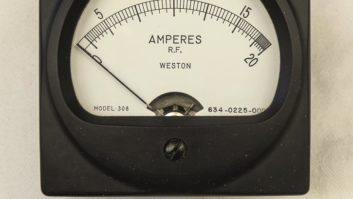
What an opportunity radio has right now.
Much attention is being paid, rightly, to when and how stations must comply with the latest Common Alerting Protocol standard, meaning being able to accept a CAP-formatted EAS message.
But let’s step further back from the immediate practical considerations and realize too that we are at a moment of real opportunity for radio broadcasters to reestablish themselves as first communicators in times of local crisis.
Radio often has been viewed as absent or unattended when emergencies strike. Sometimes the criticism is unfair. Certainly it has been applied with a broad brush; we know that many broadcast outlets are responsible channels of vital information in emergencies.
But most of us also know of instances when a station — hopefully not ours — was merrily playing music or airing a baseball game while listeners remained ignorant that a serious weather problem or other emergency was developing near at hand. And as much as industry leaders don’t like to say so, criticisms about “radio as an automated jukebox” hit close to home in many markets. That reputation gives support to people who want the government to institute more stringent rules about “localism” and how radio stations are run.
Radio and alerting go together. At least, they should.
On the radar
In a session at the recent Radio Show convention, Lisa Fowlkes, deputy chief of the FCC’s Public Safety and Homeland Security Bureau, urged broadcasters to review their states’ EAS plans and their own deployment of EAS assets, in cooperation with their State Emergency Communications Committees.
I couldn’t agree more. Further, I think savvy managers can use this time to reintroduce themselves and their stations to emergency managers and to local leaders.
Politically, alerting is “on the radar” right now. A decade of terrorist activity, floods, mine disasters and hurricanes; the success of Amber Alerts; and the penetration of mobile devices in consumers’ everyday lives have elevated awareness. The government’s plan to update our alerting infrastructure has sharpened focus.
I believe many stations should do an honest self-assessment of their involvement in alerting and in their policies about breaking format for times of emergency. They should reach out to local government leaders and emergency managers to drive a new dialogue; this would be good business as well as good citizenship. And they should better promote the coverage and emergency services they already provide.
Work with your local government officials to build partnerships. Those folks are responsible for warning the population, and you have means to help.
Remind those emergency managers about how powerful your platform is, of radio’s penetration in the market and your ability to serve the community when electricity is out — even when TVs, Internet connections and cell phones are silent.
Talk to them to decide, in advance, under what circumstances you are willing to interrupt your programming (and, importantly, what kind of situation does not warrant interruption). Insist on post-emergency/post-test reviews, to understand where the system works and where it doesn’t. Most important, get to know them, and make sure they know you.
(What if you don’t have management authority to do the above on your own? You still have an important role to play. Push your station management to reach out to the emergency alerting community. Collect the necessary contacts. Prompt a dialogue if it doesn’t exist. Sell your boss on why it’s good for your station to be seen as involved. Encourage management to review what your organization’s policies on emergency coverage and to revise them. Talk to your peers at other stations in the market and around the state to be as informed as possible about your local infrastructure.)
And when your station does an exceptional job at informing your community, trumpet that fact. Write to the local newspaper; create a promo spot. Tell listeners about that snow week when thousands of people without power relied on on your signal for blizzard news or post-hurricane help. Pat your staff — and those emergency management personnel — on the back on the air.
What could be more powerful PR than a station saying to community leaders: “If we have steel in the air, we’ll be there for you”? What could be more impressive to an emergency manager than you calling to ask, “How can we help you meet your public warning responsibilities?” What could be more motivating to a radio manager than the chance to be a hero?
The worst outcome for radio in complying with CAP would be if new equipment were simply screwed into a rack. The best outcome would be for managers to recommit themselves to partnerships that produce timely local coverage of emergencies — and seeing their standing as local businesses rise as a result.












